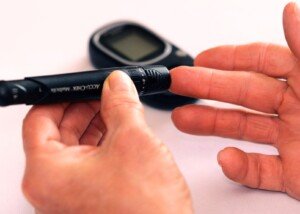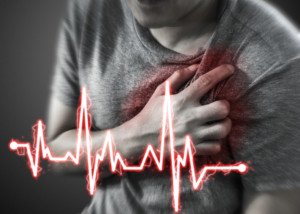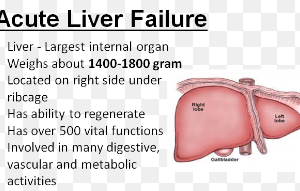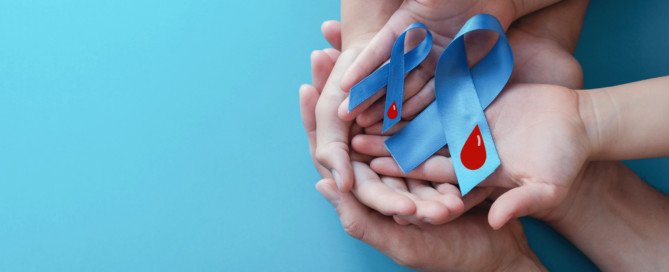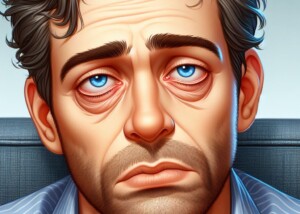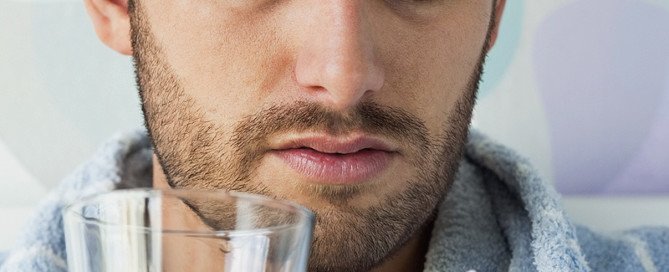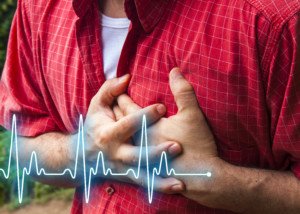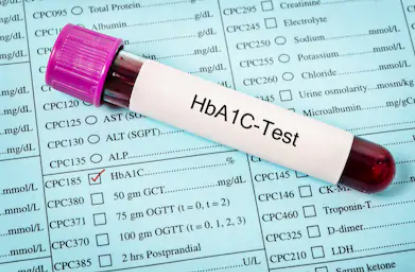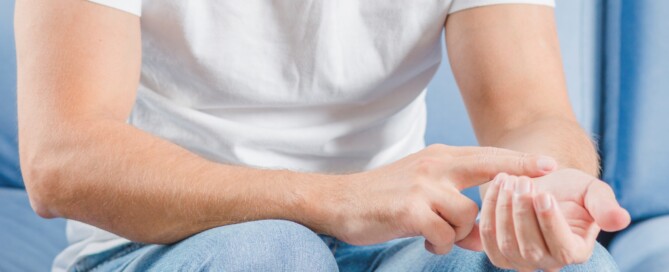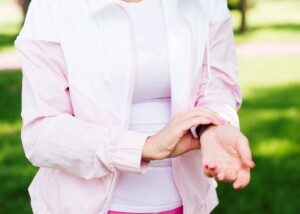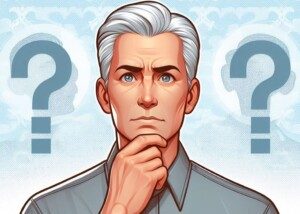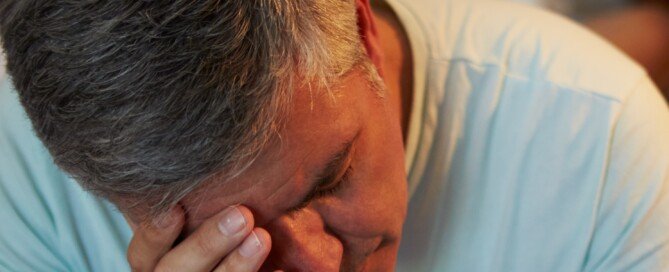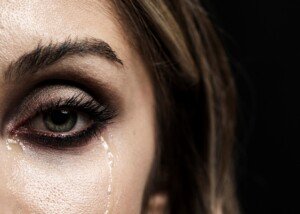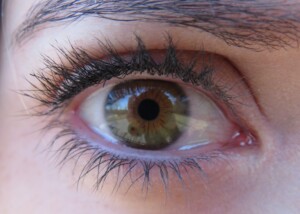Fasting Glucose Reading of 119: How Dangerous Is This?

It’s not health anxiety if you keep worrying about your fasting blood sugar being around 119.
Because if you keep seeing 119, you’re in big trouble – and your excessive worrying is quite justified. (more…)
Just How Bad Is 135 Over 90 Blood Pressure As a Baseline ?

A blood pressure reading of 135 over 90 is so very borderline for high, but don’t let that fool you because it’s dangerous!
“Blood pressure is called the ‘silent killer’ for good reason,” says Stacy Mitchell Doyle, MD, resident physician of FoodTherapyMD and long-time advocate of plant-based nutritional protocols.
“Even ‘borderline’ blood pressures, over time, result in cardiovascular disease like heart attacks, strokes, heart failure and even kidney failure,” continues Dr. Doyle.
How does a baseline blood pressure of 135 over 90 wreak havoc on the body?
Heart attack. Hypertension damages the cells of the inner lining of your coronary arteries.
Bad fats from what you eat begin collecting in the tiny tears that have formed in the inner lining from the high blood pressure.
These fats accumulate over time, and you have plaque buildup, also known as blockages or clogged arteries.
If a piece of this plaque breaks off, the body “thinks” that the area where the breakage occurred needs repair, and hence, the area rapidly clots up.
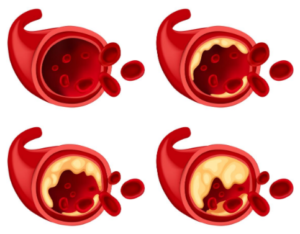
Source: vecteezy.com
Often, the repair job is overdone: The clot is so big that it completely obstructs the artery, preventing blood from getting past it.
The area of the heart muscle that’s supposed to get this blood is seriously injured: a heart attack.
Also, the piece of plaque that broke off can, itself, cause a complete obstruction “downstream” from where it dislodged.
Stroke. A dislodged piece of plaque can make its way to the brain, getting stuck in a blood vessel, cutting off oxygen to the part of the brain that the vessel feeds.
Heart failure. The surge of high blood pressure forces the heart muscle to work harder, causing hypertrophy.
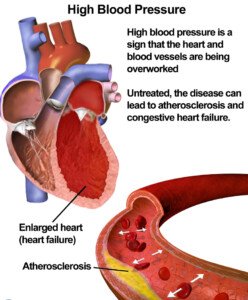
Now, hypertrophy is a great thing when it happens to your skeletal muscle.
But when cardiac muscle enlarges, this alters the heart’s natural design and impairs its ability to pump.
You end up with reduced blood flow throughout the body.
Kidney failure. Twenty percent of cardiac output goes to the kidneys. These organs, then, are very sensitive to reduced blood flow.
Over time, this compromise can permanently damage the kidneys.
Bottom line, even a blood pressure reading of 135 over 90 — which seems low compared to 170 over 110 — outright stinks.
Never settle for a 135 over 90 or borderline blood pressure as a baseline or frequent reading at rest.
How to Knock Down that 135 over 90 Blood Pressure
“If your pressure is routinely in the borderline range, it’s important to get it down,” says Dr. Doyle.
“The BEST and most effective way is to change your diet.
“This means adopting a whole food, plant-based diet with the elimination of processed foods and processed sugar, and limiting animal products (meat, dairy, eggs) to less than 10 percent of your total calories or cutting them out completely.
“Understand that high blood pressure medications lower your number, but don’t address the actual cause of your high pressure, which is the chronic inflammation that is occurring in the arteries and organs.
“This chronic inflammation is the result of the inflammatory, disease promoting foods we eat, such as processed sugar and meat/dairy.”
These foods are called pro-inflammatory foods and include so-called health foods such as high fiber fruit bars (lots of added sugar and other additives), many cereals (added sugars, preservatives) and frozen meals such as Marie Callender’s chicken pot pies which contain the toxic trans fats.
Dr. Doyle explains, “So if you are ‘borderline,’” grab as many fresh fruits and vegetables as possible, and ditch the sugar, meat, junk food and sodas. And add 45 minutes of exercise a day.”
 FoodTherapyMD™ is the brainchild of Dr. Mitchell Doyle and recognizes that phytonutrients, the substances that make plant food so amazing, can be tailored to fight specific disease states.
FoodTherapyMD™ is the brainchild of Dr. Mitchell Doyle and recognizes that phytonutrients, the substances that make plant food so amazing, can be tailored to fight specific disease states.
 Lorra Garrick has been covering medical, fitness and cybersecurity topics for many years, having written thousands of articles for print magazines and websites, including as a ghostwriter. She’s also a former ACE-certified personal trainer.
Lorra Garrick has been covering medical, fitness and cybersecurity topics for many years, having written thousands of articles for print magazines and websites, including as a ghostwriter. She’s also a former ACE-certified personal trainer.
.
Top image: Shutterstock/Photographee.eu
How Long Before Prediabetes Turns into Type 2 Diabetes?

Been just diagnosed with prediabetes and are fearfully waiting—or calmly wondering—how long before you have type 2 diabetes? (more…)
Niaspan vs. B3 Supplement for Coronary Artery Plaque Reversal

Is Niaspan really more effective than a B3 supplement for coronary plaque reversal or is this the pharma industry’s way to a profit stream? (more…)
A1C of 5.9: What Exactly Does this Mean for Diabetes?
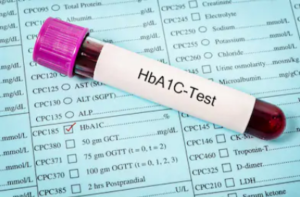
Beware if your A1C came back as 5.9.
Though this doesn’t mean (yet) that you have diabetes, it means that type 2 diabetes is rapping hard on your door and you’d better up the ante on your security system. (more…)
Irregular Heartbeat vs. Twitching Muscle in Chest: Comparison
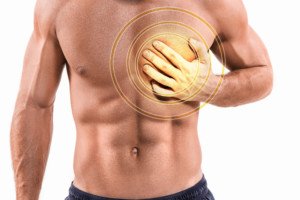
This is about how to tell the difference between an irregular heartbeat and a twitching muscle in your chest.
When a muscle twitches (fasciculates), it can be very rhythmic, kind of like the beat of a drum.
However, it can also be irregular, with an erratic nature.
If this erratic or irregular nature occurs in a muscle that’s located in your chest, you’ll feel it just as if you were feeling the erratic fasciculations of an eyelid or elsewhere such as in your butt, the back of your upper leg or your calves.
An irregular heartbeat can’t always be felt, which is why sometimes, a person is diagnosed with arrhythmia despite not feeling anything wrong with their heart rhythm.
Irregular Heartbeat OR Twitching Muscle in the Chest?
“Irregular heartbeats, also known as arrhythmias, can feel like a flutter in the center of the chest and are quite common,” says J. Mark Anderson, MD, DABFM, of Executive Medicine of Texas and who is board certified in family medicine.
Recently I experienced twitching in a chest muscle – that came several hours after a chest workout at the gym.
I was at my computer when it began. And I have to admit, it made me think of my heartbeat becoming irregular.
So I took my pulse at the radial artery. While I was feeling my pulse, I was also feeling the mild thumping in my chest.

Shutterstock/caimacanul
THEY DID NOT SYNCH. And that’s one of the key ways to tell the difference between an irregular heartbeat and a twitching muscle in the chest.
- They totally did NOT match up.
- I clearly felt two distinct, separate entities.
- My pulse was steady and in a normal range.
- Simultaneously I felt the fasciculations, which were a different sensation, not at all in tune with the pulse.
But there’s more you can do to differentiate between an irregular heart rhythm and a simple muscle twitch.
LOOK at your chest where you feel the fasciculations. I did. I actually saw the thumping beneath the skin. This was further confirmation of what was actually happening.
“In many instances, a twitching chest muscle can be seen by the patient or observed by others,” says Dr. Anderson.
“Much like a twitching eyelid, a twitching muscle in the chest is not serious. It can be a result of stress, either physical or mental.”
Now if you don’t see any movement under your skin, do not panic.
First of all, hold a magnifying mirror beneath the area (you may need to tinker with the position to get the right angle for viewing).
The mirror that works best is one of those circular three and a half inch diameter ones that you can get at Walmart and I’m sure many other retailers.
They come in 5x, 10x and even 20x magnification. You will see a LOT with a 20x mirror.
If you still don’t see anything, this does not mean there’s no twitching.
“Twitching in a chest muscle feels much different than an irregular heartbeat,” says Dr. Anderson.
“Instead of feeling as if it’s coming from deep within the chest, it will feel more superficial.”
So go back to taking your pulse and noting that what your fingers are detecting in your wrist does not synch up with what you’re feeling under your chest.
You may also feel for your pulse at your neck.
The twitching may or may not persist. And by crazy chance, you may have an arrhythmia that you don’t feel.
“Sometimes people with arrhythmias will have the urge to cough,” says Dr. Anderson. “Coughing can help the heart go back to its regular rhythm.”
If you have a gut feeling that something’s wrong with your heart, see a cardiologist who will listen with a stethoscope and have a 12 point EKG taken to see if there are any abnormalities in the rhythm.
Keep in mind that worrying about this can induce muscle twitching!
Dr. Anderson explains, “Arrhythmias are often caused by stress or caffeine, but some arrhythmias happen with no identifiable cause.
“Arrhythmias that last longer than a few seconds or that are accompanied by symptoms such as dizziness, fainting, fatigue or shortness of breath should be treated as a medical emergency.”
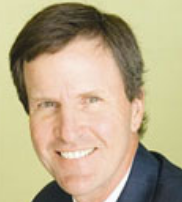
Dr. Anderson is coauthor of the award-winning book, “Stay Young: 10 Proven Steps to Ultimate Health,” and host of the nationally syndicated Staying Young Show which goes to podcast as Staying Young Show 2.0.
 Lorra Garrick has been covering medical, fitness and cybersecurity topics for many years, having written thousands of articles for print magazines and websites, including as a ghostwriter. She’s also a former ACE-certified personal trainer.
Lorra Garrick has been covering medical, fitness and cybersecurity topics for many years, having written thousands of articles for print magazines and websites, including as a ghostwriter. She’s also a former ACE-certified personal trainer.
.
Top image: Shutterstock/Master1305
Low Blood Pressure but Fast Heart Rate: Is This Okay?
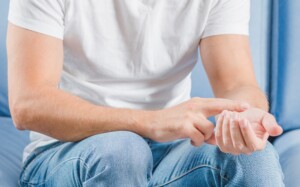
Your blood pressure is impressive: always low, but dang, your baseline heart rate is always fast, like in the 90’s.
“Every body is different; however, higher resting heart rates can be an indication of underlying conditions such as hyperthyroidism, dehydration, the effects of drugs/medications (like caffeine), stress and high levels of stress hormones, or even deconditioning (meaning you’re out of shape),” explains Stacy Mitchell Doyle, MD, resident physician of FoodTherapyMD and long-time advocate of plant-based nutritional protocols.
Additional Causes of Baseline Fast Pulse
• Overtraining in athletes or fitness enthusiasts
• Menopausal/postmenopausal hormonal fluctuations
Though these aforementioned causes can be treated, the issue is the effect that a chronically fast pulse has on the heart.
Low blood pressure does not cancel out this effect.
Though historically, a “normal” pulse was defined as between 60 and 100 beats per minute, that was before the studies began coming out that linked a rapid resting heart rate with several serious conditions.
“Higher heart rates mean your heart is working harder to pump blood, and over time, higher resting heart rates have been associated with higher incidence of heart disease, stroke and all-cause mortality,” says Dr. Doyle.
Yesterday’s “Normal” Is Today’s “Fast”
A study that came out in 2010 (Okin et al) found that heart rates exceeding 83 beats per minute were associated with a 55 percent greater risk of cardiovascular death and a 79 percent higher risk of all-cause mortality.
And high blood pressure, plus other cardiovascular risk factors, were adjusted for.
Thus, a chronically fast heart rate at rest is an independent risk factor for problems – even if you have consistently low blood pressure readings such as 105 over 68.
Solutions
“If you find your heart rate is consistently high, but have a clean bill of health from your doctor, try more exercise and physical activity (which conditions your heart to work more effectively, meaning it pumps the same amount of blood with less beats),” urges Dr. Doyle.
Physical training will increase your heart’s ejection fraction: the amount of blood pumped out with each beat.
One of the most effective, if not the most effective, types of exercise to accomplish this, especially in people under 65, is interval training.
Dr. Doyle also says to “drink more water and stay hydrated, meditate and reduce stress, eliminate caffeine or any other stimulant, and eat those plant-based foods that supply you with phytonutrients and antioxidants that keep your heart and vessels healthy.”
 FoodTherapyMD™ is the brainchild of Dr. Mitchell Doyle and recognizes that phytonutrients, the substances that make plant food so amazing, can be tailored to fight specific disease states.
FoodTherapyMD™ is the brainchild of Dr. Mitchell Doyle and recognizes that phytonutrients, the substances that make plant food so amazing, can be tailored to fight specific disease states.
 Lorra Garrick has been covering medical, fitness and cybersecurity topics for many years, having written thousands of articles for print magazines and websites, including as a ghostwriter. She’s also a former ACE-certified personal trainer.
Lorra Garrick has been covering medical, fitness and cybersecurity topics for many years, having written thousands of articles for print magazines and websites, including as a ghostwriter. She’s also a former ACE-certified personal trainer.
Top image: Freepik
Source: sciencedaily.com/releases/2010/08/100812151640.htm
How Dangerous Is Blood Sugar in the 500’s? Organ Failure Possible

Just how dangerous is a blood sugar reading in the 500’s?
VERY.
“Blood sugar in the 500’s is dangerous, especially if it stays there for any significant period of time (like hours),” says Stacy Mitchell Doyle, MD, resident physician of FoodTherapyMD and long-time advocate of plant-based nutritional protocols. (more…)
Bleeding, Oozing Smelly Belly Button: Causes & Solutions

Eeuuugh! What could be causing your belly button to stink and be oozing and bleeding?
Could it be some form of cancer? (more…)
Can a Sinus Cold Cause only One Eye to Water ?
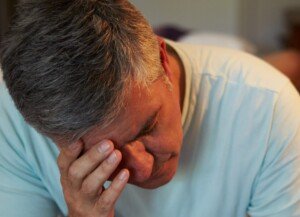
If you have a bad sinus congestion from a cold, what typically happens is that both eyes will be watery as a result.
Epiphora is the medical term for excessive watering of the eyes.
When only one eye is watery or tearing (regardless of cause), this is called unilateral epiphora. (more…)



